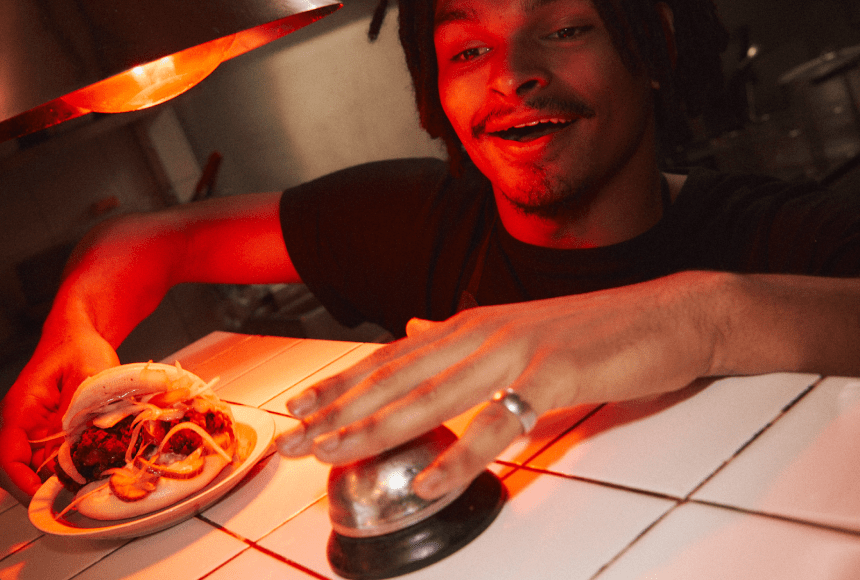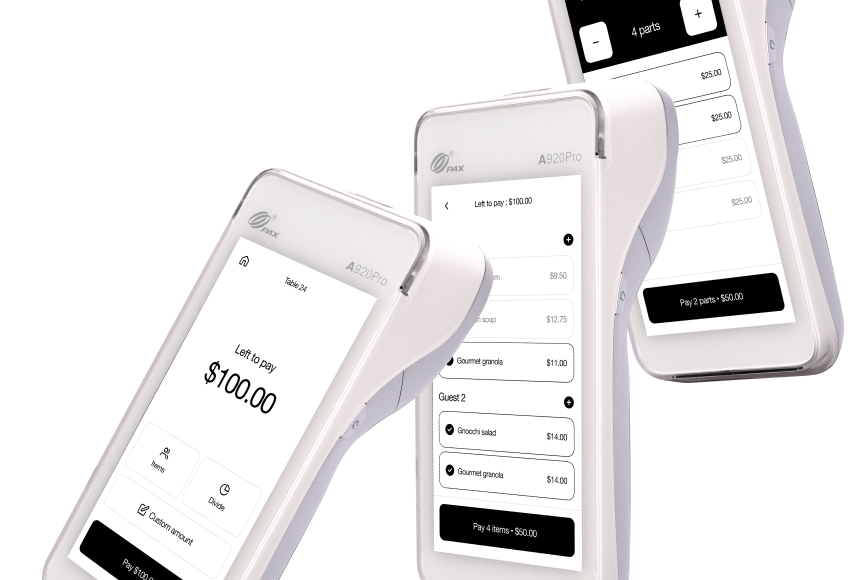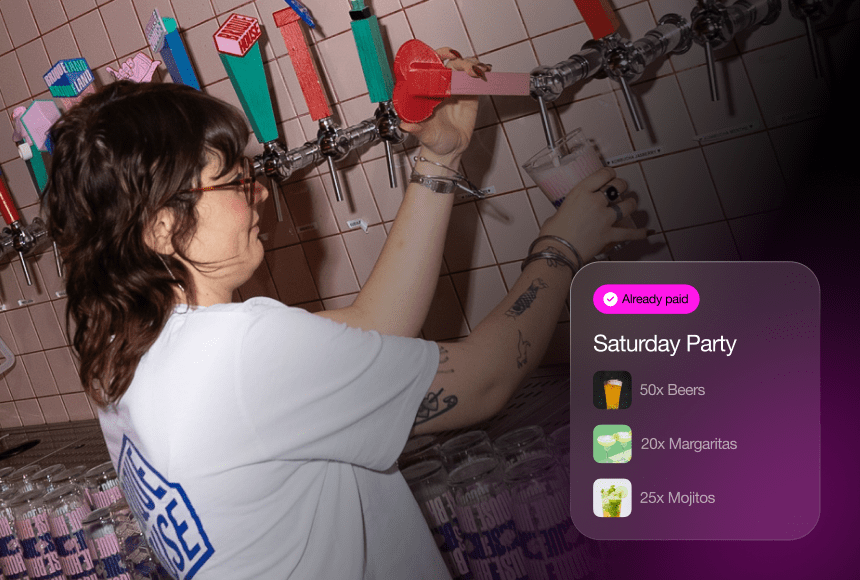
QR Codes at the Heart of Modern Restaurant Service
From Niche Technology to Industry Standard
Just a few years ago, QR codes in restaurants felt like a futuristic addition—something fancy spots might experiment with, but far from a universal expectation. Fast-forward to 2025, and the landscape has shifted. Scanning a QR code to see a menu or place an order is now second nature for millions of diners across the United States and beyond.
But how exactly did this happen? And what does it mean for your restaurant’s daily operations? The short version: consumer demand for contactless convenience, combined with significant improvements in digital ordering platforms, has turned QR code ordering from a novelty into a must-have. According to National Restaurant Association data (How Tech is Changing the Restaurant Industry), roughly 60% of U.S. restaurants now incorporate some form of mobile or contactless ordering, a figure that has doubled in just the past three years. With widespread smartphone adoption and new digital habits formed, guests expect your establishment to keep pace.
The Evolving Expectations of Diners
Picture this scenario: a party of four arrives for brunch. They sit down, eager to catch up and share a good meal. Instead of browsing a physical menu, they quickly scan the code on the table and start exploring your offerings on their phones. Within minutes, they place their orders, request modifications, and see real-time price updates or special deals. No frantic server needed. No dog-eared paper menus. Just simple, direct control at their fingertips.
In 2025, that streamlined flow has become the new normal. Guests appreciate not having to wave down busy servers just to ask about a specific dish or check ingredient details. They like that digital menus update in real time, meaning no more, “Sorry, we just ran out of that item,” surprises. It’s also far more hygienic—guests recall the days when even the standard act of handling a menu caused concern, and they gladly embrace a solution that keeps everything contactless.
- Instant Access to Menus: No waiting for a staff member to bring menus or track down the right version. Diners simply scan and begin.
- Less Paper Waste: Digital menus can be updated anytime, removing the need to print new sheets whenever you launch a seasonal dish.
- Personalized Experience: By linking your menu to loyalty programs or special data-driven deals, guests receive tailored recommendations right on their phone.
The upshot? QR code ordering is no longer a convenience for a niche crowd. It’s an expectation. Restaurants that cling to fully analog processes risk seeming outdated—and missing out on the operational benefits that come with digital adoption.
How QR Code Ordering Frees Up Your Staff
One of the biggest misconceptions about QR codes is that they diminish the personal touch. In reality, they free your staff to focus on genuine hospitality. Instead of spending precious minutes running around to pass out menus or take basic orders, servers can devote time to checking in with diners, explaining your unique specials, and generally creating a more welcoming environment.
- Less Data Entry, More Engagement: With fewer manual tasks, servers engage guests in real conversation—like recommending the perfect wine pairing or discussing the inspiration behind a chef’s new dish.
- Reduced Errors: When diners enter their own orders, the risk of miscommunication or a server mishearing specifics plummets.
- Efficient Table Management: Servers can see at a glance which tables have ordered, who’s ready for dessert, and which groups need their check. It makes the entire flow more organized.
Think of it like having an extra pair of hands at each table. The QR code handles the order input; your server can focus on what humans do best—offering genuine warmth and problem-solving in real time. And that’s the kind of personalized experience diners talk about long after their meal is finished.
A Boon for Upselling and Promotions
QR codes have also become a powerful ally for marketing. Not every diner is comfortable with a server listing five or six daily specials, especially in a packed dining room. But if they can view your add-ons or featured dishes directly on their phone—complete with appetizing photos—they’re more likely to consider an extra appetizer or dessert.
In 2025, most digital menus powered by QR codes can also highlight timed promotions. Maybe you run a midweek “happy hour” special from 4 p.m. to 6 p.m. or a limited-time brunch dish on Sundays. These features are easy to program in. Once the clock strikes 4, the discount or new item appears automatically, prompting diners to try something new.
- Visual Temptation: Quality images of dishes, cocktails, or desserts can trigger impulse orders—a known factor behind rising average check sizes.
- Dynamic Pricing: If you want to tweak a price for an item that’s in surplus or running low, you can update the digital menu in seconds—no reprinting required.
- Real-Time Feedback: Some systems allow diners to quickly rate or comment on items, giving you immediate data on what’s hitting the mark and what needs adjusting.
By turning your menu into an interactive display, you harness the curiosity of diners. Instead of them skimming a static sheet, they explore new categories or combos. Each click can bring them closer to discovering your restaurant’s hidden gem.
Streamlined Payment, Increased Table Turn
We all know the awkward dance: your guest finishes a meal, signals for the check, and your server has to scramble to a POS station, print the bill, bring it over, wait for the card, return with a receipt—and so on. Meanwhile, other tables may be waiting to be seated. It’s a chain reaction of delays.
Enter QR code payments. By pairing digital menus with contactless pay, guests can handle their check in a few taps the moment they’re ready. This not only reduces wait times but also speeds table turnover at peak hours.
Many restaurants using solutions like sunday have seen a clear advantage:
- Contactless Checkouts: No more passing credit cards or dealing with pens and slips. Diners tip, split bills, and wrap up swiftly.
- Auto-Calculations: Splitting a check evenly among a group of five? Easy. Each person scans the same code to pay their portion without confusion.
- Integrated Reviews and Feedback: Once the bill is settled, diners can leave a quick rating or comment, capturing their impressions while they’re fresh.
In a competitive market, every minute counts. Faster turnarounds mean serving more customers without making anyone feel rushed. You simply give diners the tools to control the pace of their payment process.
Data-Driven Insights for Smarter Decisions
One hidden gem of QR code ordering is the data you can gather. In 2025, restaurant owners are increasingly accustomed to gleaning real-time insights from digital ordering platforms, which can show:
- Popular Items: Easily see which appetizers are your top sellers or which new dishes might need a promotional push.
- Peak Ordering Times: Identify your busiest windows each day, so you can schedule staff and prepare inventory more effectively.
- Redemption of Specials: Track how many guests took advantage of a limited-time discount or featured dish. No guesswork—just factual numbers.
These metrics turn day-to-day operations into a more predictable, data-informed routine. Instead of “I think guests love the new truffle fries,” you’ll know exactly how often they’re ordered and whether they boost average ticket value. By harnessing this info, you can adjust your strategies in near-real-time, reducing waste and amplifying what works.
Driving Loyalty and Return Visits
Another 2025 trend: loyalty programs embedded directly within the QR code process. Diners scan to order, and the system automatically applies or updates their reward points. The result is a seamless experience—no separate app to download, no waiting for a server to punch a paper card, no hassle.
The advantage for your restaurant is significant:
- Higher Sign-Ups: Guests join loyalty programs on the spot without extra steps. That means more contact info for marketing and follow-ups.
- Automated Rewards: Once they hit a spending threshold, the system can prompt them with a free appetizer or dessert—right on the menu next time they scan.
- Direct Communication: Because they’ve opted in, you can send exclusive offers tailored to their preferences. They’re more likely to return if you cater to their favorites.
Imagine the effect on your repeat business when diners realize it’s easy to accumulate and redeem rewards without extra steps. It’s like having an invisible loyalty card that never gets lost in the bottom of a purse.
Overcoming Common Myths
As with any tech shift, QR code ordering has faced its share of myths. Some restaurant owners worry about older guests feeling excluded, or that digital menus might be confusing. In practice, however, most smartphones handle QR scanning with zero fuss—just open the camera app and point.
If you’re concerned about accessibility, keep a few high-quality printed menus on hand for guests who prefer them. Train your staff to patiently guide newcomers through scanning. In reality, once someone tries it once or twice, the learning curve is minimal.
- Myth: “Our older patrons won’t adapt.” Reality: Many older guests own smartphones, and a short explanation is typically all they need. Plus, they’ll appreciate the option to see text in larger font on their devices.
- Myth: “It kills personal interaction.” Reality: Freed from constant order-taking, servers can focus on real hospitality—chatting, answering questions, and forming genuine connections.
- Myth: “We’ll lose our restaurant’s vibe.” Reality: QR codes can be designed to match your branding, or placed discreetly. They don’t overshadow your ambiance any more than a tasteful sign or menu holder.
Preparing for the Future
If you haven’t already adopted QR code ordering, 2025 is the year it becomes more than just a “nice-to-have.” It’s rapidly moving into “necessary to compete” territory. Younger diners expect a frictionless, digital-friendly experience wherever they go, and older generations are catching up fast.
Here’s what you can do to jump on board if you’re not already:
- Start Small: Use QR codes for just your drink menu or dessert specials. See how guests respond, then expand to the full menu.
- Pick a Trusted Tech Partner: Look for a solution that offers stability, data security, and user-friendly interfaces. Tools like sunday combine menu browsing, ordering, and quick payment, all from one QR scan.
- Train Your Team: Hold brief sessions on how to troubleshoot scanning issues, handle special requests in digital form, and integrate the new system into daily routines.
- Market the Change: Let your regulars know you’re bringing in something new. A simple sign, social media update, or mention from hosts can make all the difference in creating excitement rather than confusion.
Tech That Serves, Not Replaces, Hospitality
When executed well, QR code ordering works in harmony with your staff, elevating both speed and personal attention. It’s like having an extra line cook or host behind the scenes, streamlining the flow of orders so your team can shine where it counts—making diners feel welcomed and well cared for.
As 2025 pushes the restaurant industry deeper into digital territory, the question isn’t whether QR codes are a passing fad. The real question is how quickly you can harness their potential to delight your guests and improve daily operations. Because in a climate where every edge matters, giving diners a smooth, modern experience can set you apart from the competition.
Embracing QR code ordering doesn’t mean discarding everything classic or traditional about dining out. Instead, it’s about weaving technology into your hospitality approach—keeping the warmth while removing the wasted motions and awkward wait times. If that allows your staff to spend an extra minute recommending a wine pairing or checking on how a guest liked their appetizer, you’ll see how modernizing the ordering process can make your restaurant even more welcoming.
And that’s why QR code ordering is no longer just an option. It’s essential in 2025, a key ingredient in today’s recipe for a thriving, future-ready restaurant.
Find out more today
Drop us your details below and we’ll reach out within the next 24h



